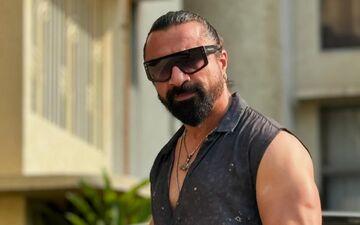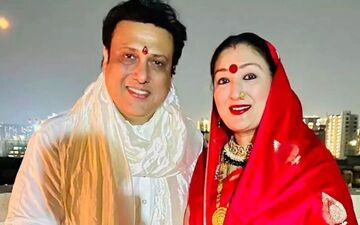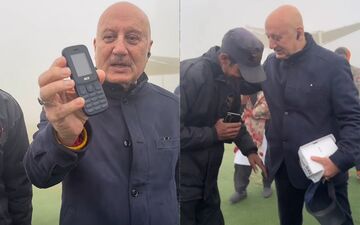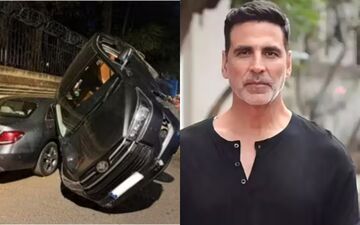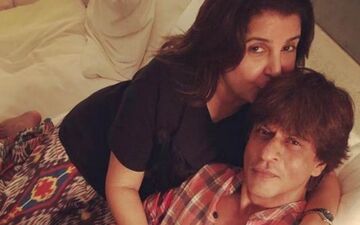Twin-hero projects on the decline in Bollywood
The number of Bollywood films featuring two heroes -- especially two equally big names -- is steadily decreasing. But why? SpotboyE probes and comes up with some interesting answers
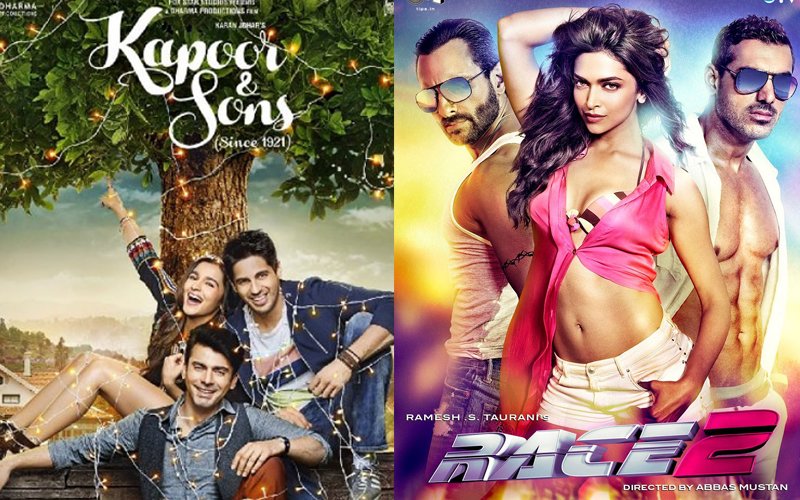
SpotboyE recently told you how Zoya Akhtar is finding it tough to finalise the cast of her 2-hero film. While Ranveer Singh is already on board, search is still on for the parallel lead. Both Ranbir Kapoor and Varun Dhawan, we told you, turned the project down (Varun, Ranbir turn down Zoya, April 6). Buzz was, they didn’t want to play second fiddle to Ranveer whose career is on an upswing after Bajirao Mastani’s success.
Image Source: twitter/Kapoor& Sons
In Shakun Batra’s Kapoor & Sons, the love-hate relationship between the two brothers played by Sidharth Malhotra and Fawad Khan was much appreciated. Their chemistry reminded several cinegoers of the Amitabh Bachchan-Shashi Kapoor bonhomie in the 1970s. It also made us wonder why we don’t see too many two-hero films anymore.
The truth is, Bollywood filmmakers are finding it increasingly difficult to finalise actors for such projects.
Image Source: Manav Manglani
Of course, this year has Ae Dil Hai Mushkil (Ranbir Kapoor & Fawad), Rangoon (Shahid Kapoor & Saif Ali Khan) and Dishoom (John Abraham & Varun Dhawan) apart from several smaller ventures. In 2015, a dozen two-three hero films were released -- Baby, Brothers and Dilwale being the main examples.
Image Source: twitter/iamsrk & akshaykumar
In 2014, the list had fewer names -- Yaariyan, which featured a host of newcomers, and Happy New Year with Shah Rukh Khan and Abhishek Bachchan sharing the focus.
Image Source: twitter/T-Series
Let’s rewind to 2013, which saw many multiple-hero projects -- Yeh Jawaani Hai Deewani (Aditya Roy Kapur & Ranbir), Race 2 (Saif and John), Kai Po Che (Sushant Singh Rajput, Rajkummar Rao & Amit Sadh) and Once Upon Ay Time In Mumbaai Dobaara (Akshay Kumar & Imran Khan), to name a few.
Image Source: Manav Manglani & filegaga
Go back a little more. Years 2012 and 2011 saw films like Players (Abhishek Bachchan, Neil Nitin Mukesh & Bobby Deol), Agneepath (Hrithik Roshan & Sanjay Dutt), Department (Amitabh Bachchan & Sanjay Dutt), Son Of Sardaar (Ajay Devgn & Sanjay Dutt), Zindagi Na Milegi Dobara (Hrithik Roshan, Abhay Deol and Farhan Akhtar) and Desi Boyz (Akshay & John) hitting the screens.
Image Source: twitter/TSeries & eros
The point we’re trying to make is pretty obvious. The number of multiple-hero projects is dipping every passing year. In most cases, one hero overshadows the other or all actors are newcomers. Or else, the banner is too big for any star to say ‘No’ to.
Probe a little and industry sources cite various reasons for not being too keen on multiple hero projects.
Casting director Kunal M Shah says, “Actors want to establish themselves as solo heroes. Most of them turn down the idea of a two or three-hero film; at times, they refuse to even meet and discuss the project. But of course, if the banner is in the league of Yash Raj Films, Excel Entertainment, Dharma Productions or Nadiadwala Grandsons, they might budge.”
He adds, “Even someone like Kartik Aryan (of Pyaar Ka Punchnama fame) doesn’t want to be cast in a multi-hero film. Films like Rocky Handsome and Holiday have Nishikant Kamath and Freddy Daruwala as antagonists because the script demands a strong actor opposite the hero and it’s difficult to find someone who’ll agree.”
Image Source: twitter/T-series
Shakun agrees, saying that it took him a year to finalise the cast of Kapoor & Sons after Karan Johar approved the script. He points out that Fawad, Sidharth and Alia made plenty of effort to break the ice before facing the camera. “The first time we all met, Sid took us out for dinner. It helped to strike a friendship with Fawad, who is an easygoing guy like Sidharth. So, if you found their chemistry fabulous, a lot of credit goes to them and a little to the writers because they are the ones who chalked out the roles. A tiny bit of credit can be attributed to me as well for not favouring one over the other,” he explains. 
Image Source: Manav Manglani
Actors doing lesser number of films as compared to their predecessors is another reason. Trade analyst Taran Adarsh says, “Most heroes have now become producers. Also, they don’t act in 10 films a year. The number is down to 2 and they want these films to canvas just their work. No one wants to share the benefits of a hit with another male star.”
Over the past couple of years, there have been many instances of multiple-hero projects being announced, but never taking off. A major hiccup such projects often face is the unavailability of all actors at one go. One example is Aankhen 2 by Anees Bazmee. The film features Amitabh Bachchan, Shahid Kapoor, Nawazuddin Siddiqui and John Abraham… busy stars all of them.
Image Source: Manav Manglani
Devendrabhai of Naaz Distributors says, “Hera Pheri 3 and Aankhen 2 are not moving because the actors are not available together. These days, the time and effort invested in one multiple-hero film is equivalent to that required for three single hero films. The latter option is easier for producers and directors. But filmmakers like Sajid-Farhad (Housefull 3) and Vishal Bhardwaj (Rangoon) are relaxed because of the big banners backing them.”
Image Source: zimibio
Writer Mayur Puri, famous for penning films like Om Shanti Om (2007) and Happy New Year, says most actors prefer solo-hero films. “No actor is a fool. Everyone is searching for what benefits them the most. Having said that, I don’t think every hero is wary of sharing the spotlight with another. But the approach is different: during narrations, some are only interested in their role, while others are concerned about the whole film. It’s the audience who benefits in the end, because not everyone can manage a top-of-the-line cast, and whoever does, will surely entertain. Shah Rukh Khan once told me, ‘I’m making Happy New Year for nostalgia sake, because it’s getting difficult to make such films where everyone has a fair part to play.’ I agree with him,” he concludes.
Thumbnail Image Source: twitter/Kapoor& Sons & filegaga
